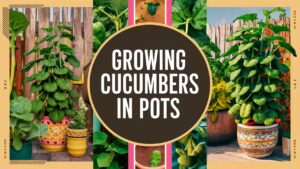This guide will help you fill your zone 5 garden with blooms through summer and into fall.
Marigold
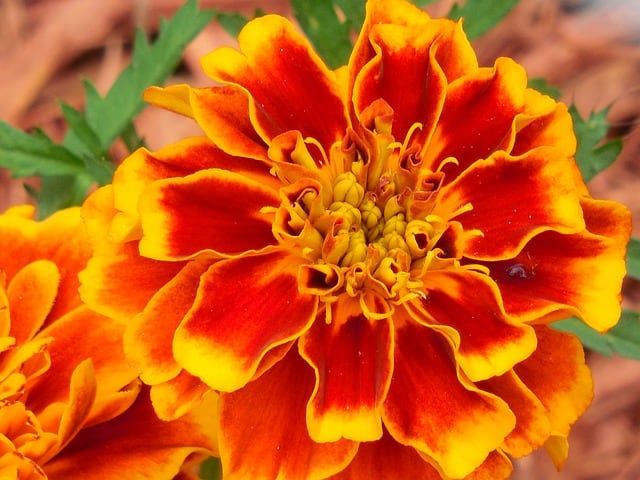
Marigolds are one of the most resilient flowers to plant in July. These annuals thrive in full sun and can tolerate a range of temperatures, making them perfect for the warm months of summer. In Zone 5, you can plant them directly in the garden, where temperatures typically hover around 70 to 85°F (21 to 29°C). Marigolds require well-drained soil and are drought-resistant once established.
These cheerful flowers come in a variety of colors, including yellows, oranges, and reds. They are great companions for vegetable gardens as their scent repels common pests, such as nematodes and aphids. When planting marigolds, space them about 8 to 12 inches apart to allow for adequate airflow and growth.
Zinnia
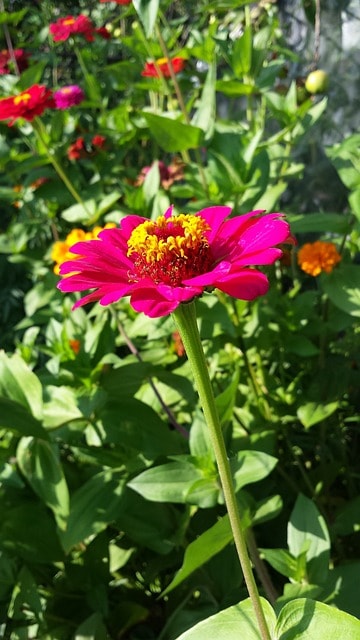
Zinnias are vibrant, robust flowers that love the heat, making them an ideal choice for planting in July. These annuals thrive in warm temperatures and do best when the soil is warm, ideally between 70 and 85°F (21 to 29°C). They prefer full sun but can tolerate light shading, particularly in the hottest part of the day.
Zinnias come in a variety of colors and sizes, ranging from small, compact varieties to larger, taller types like the State Fair Zinnia. They are also relatively low maintenance, requiring only occasional deadheading to promote further blooming. Provide them with well-drained soil enriched with organic matter, and enjoy their vibrant blooms that attract butterflies and bees throughout the summer.
Sunflower

Sunflowers are not only iconic summer flowers but also incredibly easy to grow in Zone 5 when planted in July. They thrive in full sun and warm temperatures, tolerating extremes ranging from 60°F (15°C) to 100°F (38°C). Plant sunflower seeds directly into the garden, ensuring that the soil temperature is warm enough to promote germination.
Sunflowers can grow quite tall, some varieties reaching heights of 10 feet or more. They require plenty of space, so consider planting them at least 18 to 24 inches apart. Once established, they are relatively drought-tolerant, but regular watering during germination will yield the best results. As an added benefit, sunflowers draw bees and other pollinators into your garden, enhancing biodiversity.
Cosmos

Cosmos flowers are an excellent choice for July planting due to their heat and drought tolerance. These annuals prefer full sun and can handle high temperatures, thriving in 70 to 90°F (21 to 32°C). Space them about 12 inches apart to allow for their tall, slender growth.
Cosmos produce delicate, daisy-like blooms in vibrant colors, including pink, orange, and white. They will bloom heavily from summer until the first frost, offering long-lasting color to your gardens. Providing well-drained soil is essential, as cosmos can struggle in overly saturated conditions. Deadheading faded blooms will encourage further flowering.
Nigella (Love-in-a-Mist)
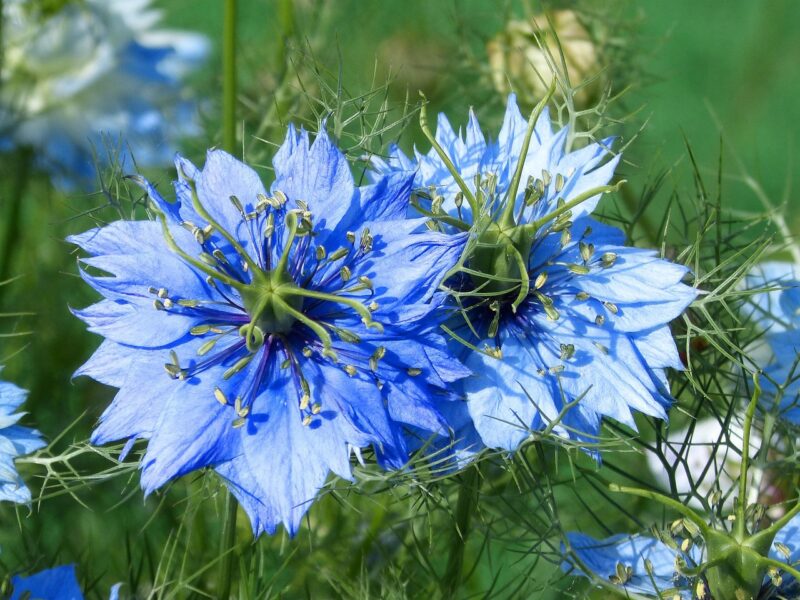
Nigella, also known as Love-in-a-Mist, can be seeded directly into your garden in July. This hardy annual prefers cooler conditions, germinating best in temperatures around 65 to 75°F (18 to 24°C). While it can tolerate summer heat, high temperatures may limit blooming.
These unique flowers come with a delicate, feathery foliage and intricate, star-like blooms. They are relatively easy to grow, requiring minimal care. Make sure to plant them in a location with full sun or light shade, and avoid overly rich soil which can lead to excessive foliage growth with few flowers. Once established, nigella plants self-seed easily, providing blooms year after year.
Aster
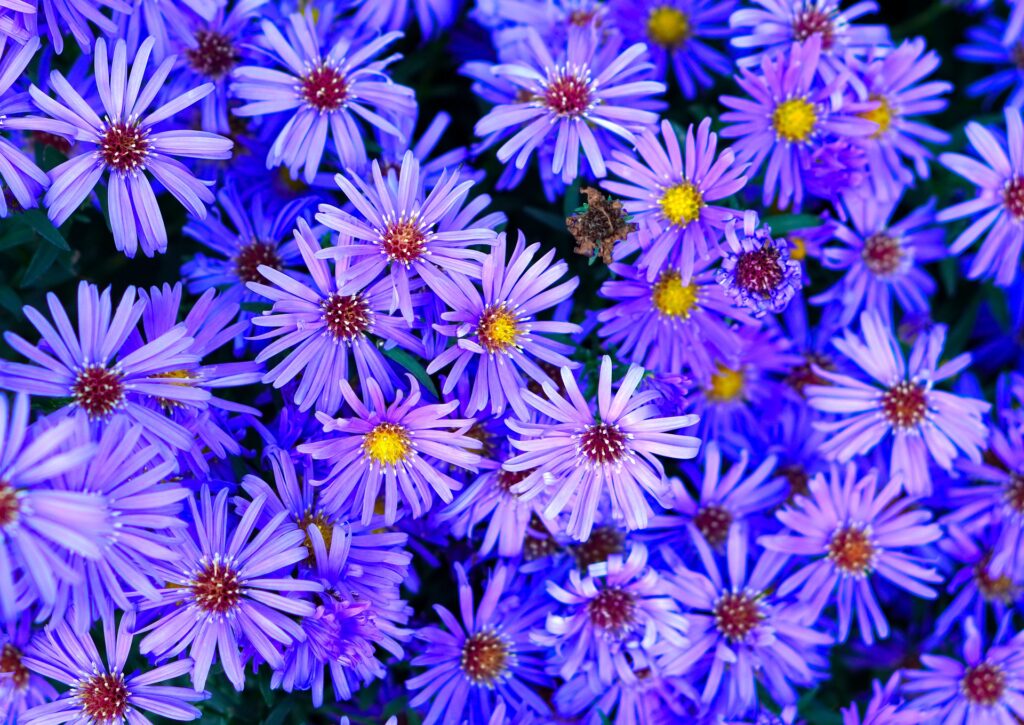
July is an excellent time to plant certain aster varieties in Zone 5. While most asters prefer spring planting, some concoctions, particularly the fall-blooming types, can be successfully seeded directly into the garden soil in July. Aim for temperatures around 70°F (21°C) when planting.
Asters produce stunning clusters of blooms in shades of blue, purple, and white, which draw pollinators into your garden. They thrive in well-drained, slightly acidic soil and benefit from full sun. Asters also require regular watering during the establishment phase, though they are relatively drought-tolerant once mature.
Salvia
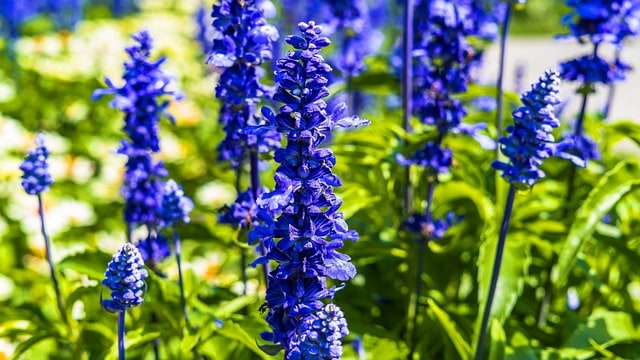
Salvia, particularly annual varieties like Salvia viridis or ‘Blaze of Fire’, is an impressive choice for a summer planting in July. These flowers flourish in warm temperatures up to 85°F (29°C) and enjoy full sun to partial shade. Plant them directly in the garden, ensuring they have plenty of space, as they can spread out.
Salvias attract bees and butterflies with their striking, tubular blooms. Their vivid blue, purple, and red colors create a vibrant show in any garden setting. Salvia prefers well-drained soil and can thrive in drought-like conditions. Occasional deadheading will encourage repeated blooming throughout the season.
Cleome
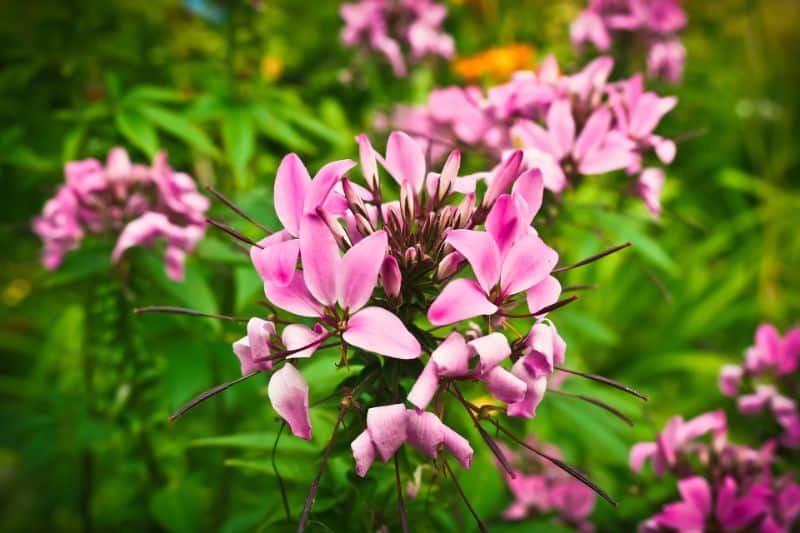
Cleome, also known as spider flower, is another annual that can be planted in Zone 5 in July. These unique flowers are heat-tolerant, flourishing in temperatures that exceed 90°F (32°C) when planted in full sun. Cleome have a tall, spiky appearance with clusters of flowers that come in shades of pink, white, and violet.
Plant cleome in well-draining soil and ensure they have adequate moisture while they establish themselves. Space them at least 12 to 18 inches apart, as they can spread and need room to grow. Cleome are also drought-tolerant once established and attract pollinators, contributing to a lively garden environment.
Black-eyed Susan
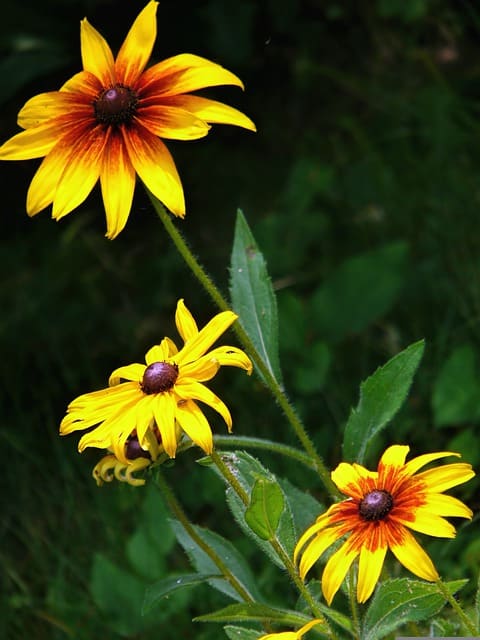
Black-eyed Susans, or Rudbeckia hirta, are classic summer flowers that add a golden touch to any space. They are hardy biennials and can be seeded in July in Zone 5. These flowers thrive in full sun, preferring temperatures between 70 to 85°F (21 to 29°C).
Offering a long blooming season, black-eyed Susans produce cheerful yellow petals surrounding a dark brown center, robustly attracting bees and butterflies. These plants tolerate a variety of soil conditions, though they prefer well-draining, sandy loam. Regular deadheading will promote more flowers and can help prolong the blooming season into autumn.
Petunia
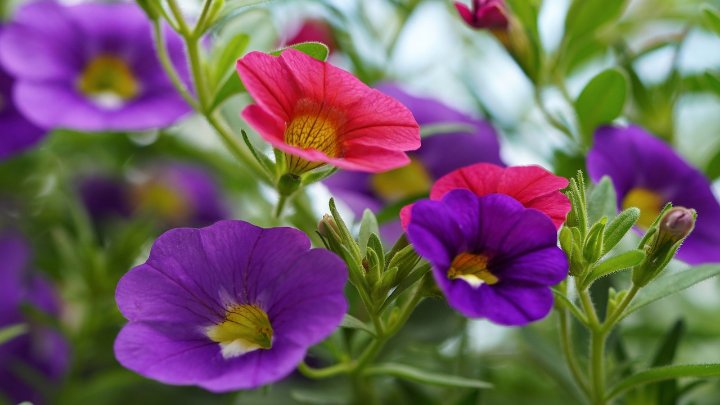
Petunias are versatile annuals that can be planted in July in Zone 5. These prolific bloomers handle warmer conditions well, thriving in temperatures as high as 90°F (32°C). Plant petunias in well-drained soil with ample sunlight to encourage the vibrant blooms they are famous for.
Petunias come in various colors, including stripes, solids, and bicolors. They are great for containers, hanging baskets, or garden beds, allowing for versatile landscaping options. Regular watering is essential, particularly during extended dry spells, as petunias can quickly wilt if allowed to dry out. Fertilizing with a balanced water-soluble fertilizer will promote lush growth and abundant flowers.
Perennial Flowers To Plant

Perennial flowers are an excellent investment for any garden, providing robust blooms year after year and contributing to the long-term beauty of your landscape. July provides a unique opportunity in Zone 5 to plant certain perennial flowers, as their deep root systems will support them through the heat of summer. Here’s a look at ten perennial flowers to consider planting in July.
Daylily (Hemerocallis)

Daylilies are among the most beloved perennials, known for their hardiness and vibrant colors. July is a prime time for planting daylilies in Zone 5, where they flourish in sun or partial shade and tolerate a range of temperatures, typically thriving best between 60 and 90°F (15 to 32°C).
These flowers bloom for only a day, hence their name, but each plant produces multiple scapes covered in stunning blossoms throughout the summer. Daylilies are tolerant of diverse soil types, including clay and sandy soils, making them a versatile choice for your garden. Provide a layer of mulch to conserve moisture, especially during the hot season.
Coneflower (Echinacea)
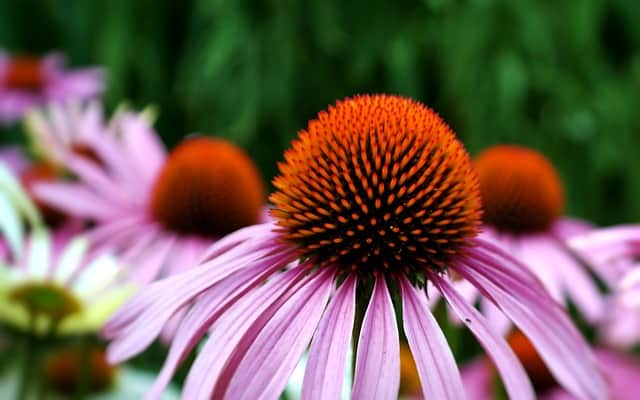
Coneflowers, or Echinacea, are robust perennials that thrive in sunny spots and are well-suited to be planted in July in Zone 5. They excel in temperatures ranging from 70 to 85°F (21 to 29°C) and are drought-resistant once established, making them ideal for summer planting.
Coneflowers are celebrated for their striking, daisy-like appearance, typically boasting purple, pink, or white petals and a prominent central cone. They attract bees, butterflies, and other pollinators, promoting biodiversity in your garden. Overall, these flowers require well-drained soil and benefit from occasional deadheading to prolong their blooming season into fall.
Japanese Anemone (Anemone hupehensis)
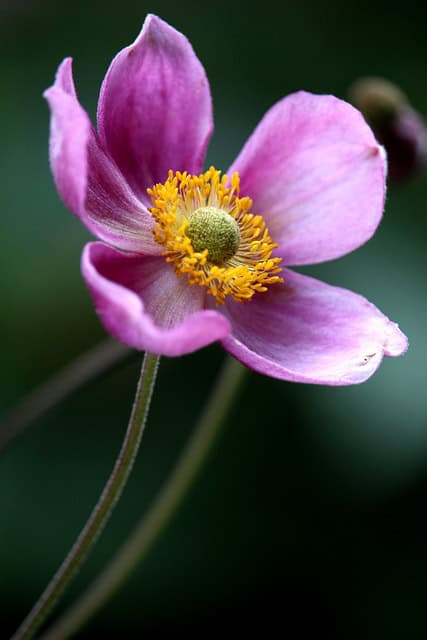
Japanese anemones can be planted in July to add exciting texture and color to your garden. These perennials perform well in partial to full shade and do best in temperatures ranging from 65 to 75°F (18 to 24°C).
Japanese anemones feature beautiful cup-shaped blooms that emerge in late summer or early fall, gracing your garden with shades of pink, white, and lilac. They appreciate rich, well-drained soil and prefer slightly moist conditions, although they are somewhat tolerant of drought. Spread them out to allow their habit of self-seeding while enhancing their floral displays.
Sedum

Sedums, especially the larger varieties, are perfect for planting in July as they not only tolerate the heat but thrive in it. They can handle temperatures up to 90°F (32°C) and work well in poor or rocky soils, making them an excellent option for low-maintenance gardeners.
These succulents produce fleshy leaves and clusters of star-shaped flowers that draw in butterflies and bees. They prefer full sun and require minimal watering once established, making them particularly drought-tolerant. Sedums are extremely resilient and will thrive in almost any condition, lending an air of resilience to your garden.
Bee Balm (Monarda)
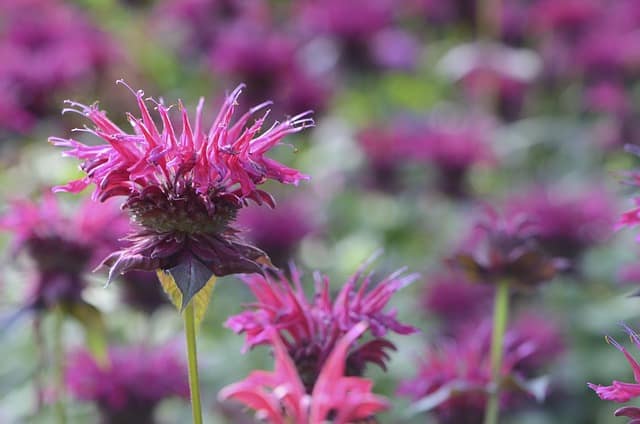
Bee balm is an attractive perennial that can be planted in July in Zone 5. This native wildflower thrives in sunny or partially shaded locations, tolerating temperatures ranging from 60 to 85°F (15 to 29°C).
Bee balm produces tufted, tubular blooms that are typically shades of red, pink, or purple and are instrumental in attracting hummingbirds, bees, and butterflies. They prefer well-drained, moist soils enriched with organic material. Regular pruning and deadheading enhance their blooming period, making bee balm an excellent choice for vibrant summer gardens.
Russian Sage (Perovskia atriplicifolia)
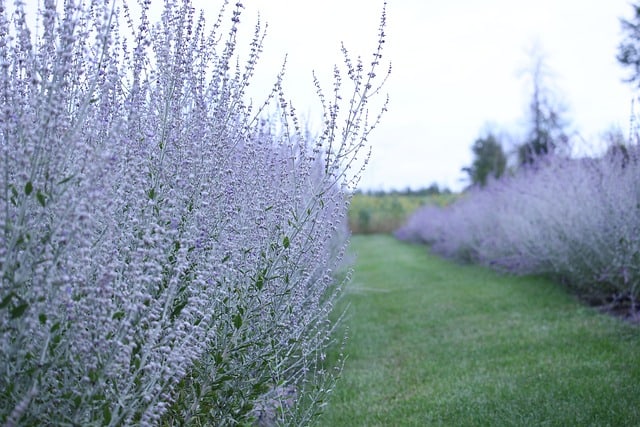
Russian sage is a tough perennial perfect for planting in July. It thrives in full sun and is known for its ability to tolerate high heat, making it well-suited for temperatures up to 95°F (35°C) in Zone 5.
This perennial brings a unique silvery-blue hue to the garden with its aromatic leaves and tall spikes of tiny purple-blue flowers. Russian sage is extremely drought-tolerant once established, requiring minimal maintenance beyond basic watering during dry spells. It pairs well with other drought-tolerant plants, creating a beautiful, low-maintenance landscape.
Phlox
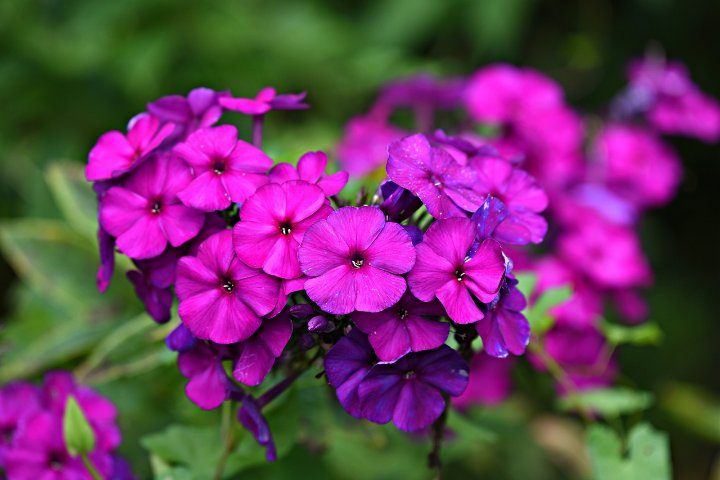
Phlox is a gorgeous perennial that adds a pop of color to the late summer garden. Planting phlox in July is optimal in Zone 5, as they favor warm temperatures around 70 to 85°F (21 to 29°C) and require full sun.
Phlox is known for its dense clusters of fragrant flowers, often seen in shades of pink, purple, and white. They thrive in well-drained soil that is kept consistently moist but not overly wet, which helps prevent diseases. Phlox attracts butterflies and many other pollinators, adding to the wildlife joy in your garden. Regular pruning can encourage a bushier growth habit and a larger blooming period.
Helenium (Sneezeweed)
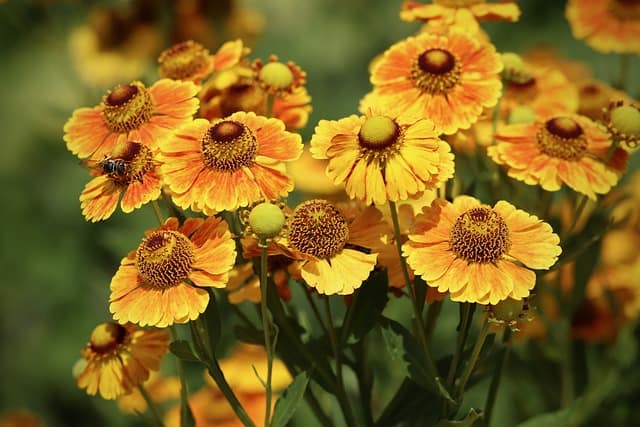
Helenium, commonly referred to as sneezeweed, is a vibrant perennial that flourishes when planted in July. It enjoys sunny spots and can thrive well in warmer temperatures, typically between 70 to 85°F (21 to 29°C).
Sneezeweed produces striking, daisy-like blooms in shades of yellow, orange, and bronze, creating stunning displays that liven up your garden. It’s an excellent addition for attracting pollinators. Helenium prefers moist, well-draining soil and should be watered regularly, especially during dry spells. These plants are perennial, ensuring they will return year after year.
Yarrow (Achillea millefolium)

Yarrow is a fantastic perennial choice for planting in July, known for its resilience against heat and drought. It thrives in the hot temperatures of summer and prefers well-drained soil, pushing tolerances that can even reach up to 90°F (32°C) if well-nurtured.
Yarrow produces flat-headed clusters of flowers in colors ranging from white to vibrant shades of yellow and pink. Its aromatic foliage gives way to a garden that attracts beneficial insects, which is a plus for any eco-friendly gardener. Yarrow fits well in herb gardens or as a border plant, providing a delightful touch to landscape designs.
Conclusion
Planting flowers in July in Zone 5 offers an exciting opportunity to add color and vitality to your garden. From the vibrant marigold and zinnia to the timeless perennial daylily and coneflower, the options are abundant. Each of these flowers thrives in the unique climate of summer, showcasing their beauty while providing habitat for pollinators.




